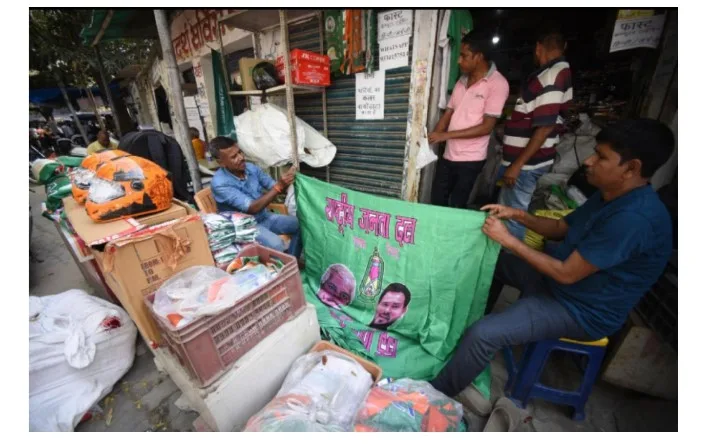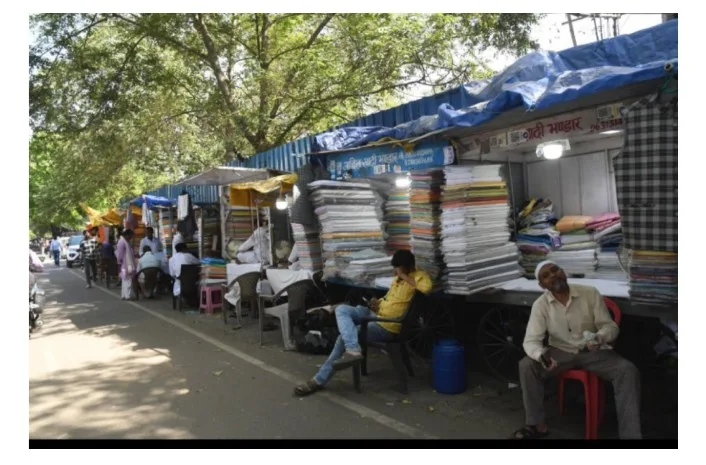The recent digitalization of election campaigns has severely impacted businesses in the state, especially small shops that relied on selling campaign materials. Unlike previous elections, where shops flourished with various campaign items, this time around, sales have dwindled significantly, leaving shopkeepers disappointed.
The influence of social media has played a significant role in this downturn, with traditional campaign materials like flags, caps, t-shirts, and masks losing their appeal among customers. A decade ago, over a hundred shops would adorn themselves with campaign merchandise, but now, only a handful remain open. The increased cost of campaign materials, such as fabric, plastic, and paper, has also contributed to the decline in sales.
In the final days leading up to the elections, hopes are pinned on a surge in sales of campaign materials, especially in areas like Patna district where voting is scheduled for June 1st. However, shopkeepers lament the lack of business, with some reporting no sales of over 50,000 rupees worth of merchandise in the past week alone.
The demand for campaign materials, including banners, scarves, t-shirts, caps, stalls, handbands, badges, and pens, has been sourced from various political parties, reflecting the diverse choices available to customers.
Moreover, the scorching heat has led to a surge in demand for cotton clothing, with khadi fabric becoming increasingly popular among politicians and their supporters. Traditional attire preferences among politicians, such as BJP’s saffron, RJD’s green, and Congress’ red, have given way to a broader spectrum of colors.
Additionally, the demand for specific types of fabrics, such as linen and silk from Bengal, has risen, indicating a shift in consumer preferences towards premium quality materials.
As the election code of conduct intensifies, so does the heat, prompting a rise in demand for breathable fabrics like cotton and khadi among candidates and their supporters. Khadi shops are witnessing a surge in orders, with some retailers reporting orders for over 15 pieces of clothing.
In conclusion, while the digitalization of election campaigns may have streamlined communication, it has inadvertently dealt a blow to small businesses reliant on traditional campaign merchandise sales. As the political landscape evolves, so too must the strategies of these businesses to adapt to changing consumer preferences and market dynamics.



